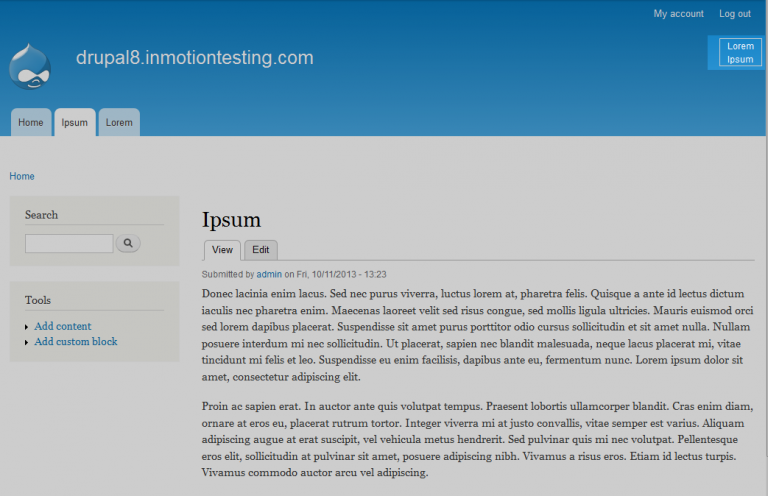
Here’s a curated list of other modules we have used that you will definitely find handy when creating domains for your website.

In addition to the main Domain Access module and his submodules listed before, there are a ton of other domain-related modules out there. If you need that, append url.site to required_cache_contexts. In other words, decide if you need content to not stay cached when moving across domains. Configure domain-sensitive caching if necessary.If it is necessary, widen the scope of cookie_domain in services.yml from '' to '.' Decide if you want users to stay logged in while moving across sites. Configure cross-domain logins if necessary.If you’re using the trusted host security setting, make sure to add your domains to the list. If you need multiple hostnames to point to the same domain, you will want to configure aliases. Provide the necessary info such as hostname, name, and other things.
#Drupal login link in menu install
First, you need to understand which modules you need, install (with composer, for example) and enable them. If you want to make your site support domains, here are the steps you need to take:

Enables you to assign canonical links for content when writing URLs so that content on different domains links to one URL. Helps editors see all the content that is assigned to each domain. Provides a means for easily changing configuration settings for domains. Allows multiple hostnames to point to the same domain. Allows users to be assigned as editors of content per-domain, sets content visibility. Provides access controls for the domains. Also, it allows users to be assigned as domain administrators, and provides additional contexts. This is the main module that enables registering multiple domains inside one Drupal installation. Inside the Domain access module, there are the following modules:

Overall, domains make sense if sites share content and users and if the functionality of all the sites (and the content types posted on them) will be broadly similar. It can be hard to add exceptions that don’t follow the common site structure.It can be hard to manage access for admins or editors to different domains.This means that they can easily share users, content, and configuration between themselves.ĭomains are helpful when you want each of your sites to display similar content because you won’t need to duplicate it across multiple sites. In contrast to multisites and profiles, domains share a database. Multisites have their own, isolated database and they do not share content between them. We’ll describe the pros and cons of using domains, the most common modules, and give tips and tricks for working with them. Today, we are going to cover the last one. There are three popular ways to do that in Drupal: multisites, profiles, and domains. There are times when we need several sites that will have a similar interface or part of the functionality.


 0 kommentar(er)
0 kommentar(er)
